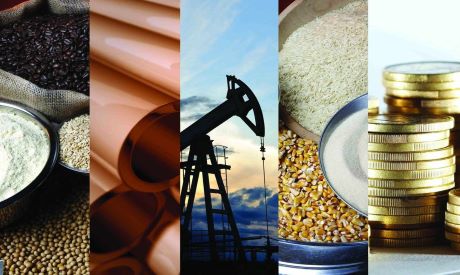To read the full report, please download the PDF above.
Executive summary│Commodities, Fed, China and volatility
Today’s environment bears striking resemblance to 2007’s late cycle
Financial contagion has reverberated into commodity paper markets – not in commodity physical markets
- At the beginning of the year, the core to our 2023 commodities outlook was driven by a cooling US economy, a resurgent China and a recovering Europe (see here). These are idyllic conditions for a commodities rally as a slowing US would allow for a Fed pause, leading to a weaker US dollar and offering the space for stronger Chinese fundamentals to dominate commodity pricing to the upside.
- While commodities were initially resilient into 2023, financial contagion stemming from the largest banking collapse since 2008 has bled into the complex as volatility creates value-at-risk (VaR) shocks, pushing investors to liquidate commodities in paper markets. Critically however, this financial turmoil has not yet spilled over into real activity and commodities in physical markets have remained immune from the scarring effects of a delevered global markets environment.
Today’s global macro environment is a redux of 2007’s late cycle
- This is not the first time we have witnessed this set up which for us is increasingly analogous to 2007’s late cycle. At the end of 2006, after the Fed raised rates by 450bp, Brent crude oil sold off from USD77/b to USD52/b on the back of recession angst and a mild winter.
- Markets were primed for a recession that didn’t occur for another year. The yield curve inverted and commodity markets destocked, amid thin spare production capacity and depleted inventories. As the Fed paused, China aggressively stimulated, and Europe eventually raised rates. These shifts led to a 12% decline in the US dollar and a near doubling in commodity prices.
- Critically, it was the onset of a US recession – which global markets fear most today – that pushed commodity prices to vertiginous highs in early 2008 as the Fed cut rates, coupled with Chinese stimulus, spurring a surge in commodities demand, and causing supply constraints to bind.
- Although we don’t expect a repeat of 2008, today’s global macro volatility accentuate the bullish vulnerability of commodity markets to a resurgent China, slowing US and weak US dollar against a backdrop of tight micro fundamentals.
We remain convicted in our commodities supercycle thesis
- Looking ahead, we recommend buying the last Fed rate hike which has proven to be the correct strategy historically for the commodities space. Structurally, we are convicted that demand weakness can relieve the symptoms of underinvestment – namely, commodity inflation – but cannot cure the underlying illness of inadequate production capacity. Only large-scale capital investments into commodity production capacity to debottleneck the system and provide excess capacity will cure the illness.
- Given the ESG-induced capacity constraints commodity markets face today, we continue to believe that we are in the early stages of a commodities supercycle, which we define as a capex cycle in which physical constraints on growth create physical pricing pressures – the supportive legislative backdrop that the “Atlantic IRA” will drive such transformational capex (see here).


